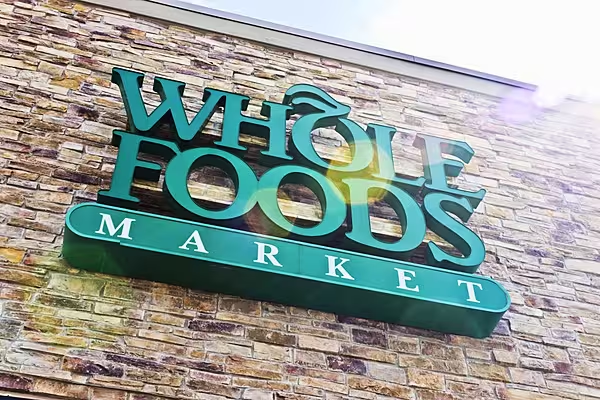Amazon.com Inc. is wasting no time in its efforts to turn itself into a grocery heavyweight. On the day its $13.7 billion acquisition of Whole Foods Market Inc. closed, Amazon slashed prices at the chain by as much as 43 percent on key items, a signal it wants to compete hard for value-conscious consumers.
But price cuts alone won't make Amazon realize its grocery ambitions -- it needs to find other ways to steal market share. To gauge its chances of doing so, it helps to know more about Whole Foods' existing customer base. As it turns out, Whole Foods shoppers are more likely than U.S. consumers overall to be Amazon devotees. And this presents Amazon with some clear opportunities -- and a less-obvious challenge.
According to surveys by Kantar Retail ShopperScape, there has long been quite a bit of overlap between the Whole Foods shopper and the Amazon shopper.
Prime Members
Importantly, Whole Foods shoppers are not just more likely to shop on Amazon, they are more likely to have ponied up $99 per year for a Prime membership.
At the same time Amazon announced those headline-grabbing price cuts, it also said it planned to turn Prime into the loyalty program for Whole Foods. Kantar's survey results underscore why that tactic is likely to work quite well: More than half of Whole Foods shoppers will already be members.
This could be a crucially important avenue for Whole Foods to improve its sagging same-store sales. The retailer has been cautiously experimenting with loyalty programs for years, conducting small-scale pilots but never launching something nationwide. Now it can quickly give more than half of its shoppers a good reason to come to its stores more frequently -- and convince some Prime members who don't shop at Whole Foods to give the store a try.
Risky Strategy?
But these close ties also come with a big risk -- namely, that Whole Foods ends up merely ceding market share to Amazon, rather than reaching new customers.
Take, for example, what Amazon has done with 365 Everyday Value, the brand that previously had been Whole Foods' private-label offering. Amazon has started selling organic lemonade, sliced almonds, bacon and many other 365 items on its website. Sure, this means 365 will get some new buyers. But it also could just start pulling existing sales of 365 items away from Whole Foods and onto Amazon's website.
Amazon has to be careful it doesn't just preach to the converted, that it makes clear to people who don't already buy groceries from Amazon or Whole Foods that there is new value and appeal to doing so.
To get this right, Amazon should consider why many people who shop on its website choose to spend most of their grocery dollars at Kroger Co. -- a supermarket chain from which Amazon has an especially good chance of siphoning customers.
Convenience
According to Kantar survey data, while price plays a key role in getting Amazon shoppers to buy groceries at Kroger, convenience is an even bigger factor.
That should give Amazon some hint as to where to concentrate its investment firepower. It suggests that to grab more grocery dollars, it must be highly strategic about where it opens new Whole Foods stores. And it will have to do a better job of getting shoppers to embrace delivery of items such as fresh produce and meat. Right now, when it comes to groceries, consumers often don't see e-commerce as being more convenient than dashing to the store down the street.
If that perception is changed, then Amazon and Whole Foods will be better positioned than any retailer to ride the wave.
This column does not necessarily reflect the opinion of Bloomberg LP and its owners.
News by Bloomberg, edited by ESM. Click subscribe to sign up to ESM: The European Supermarket Magazine.














